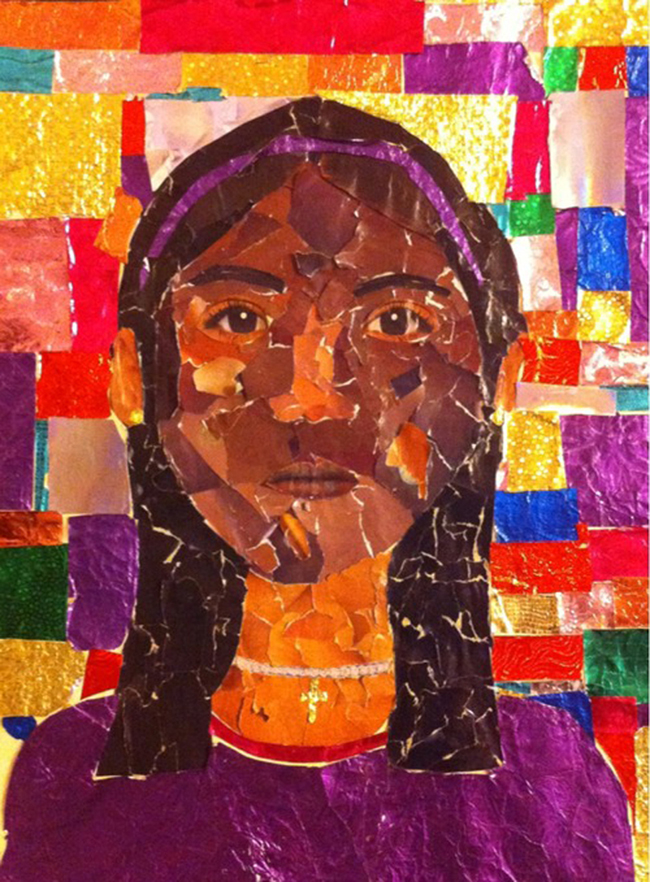By Danielle Daley | Originally Published at Black Culture. October 25, 2013
Black identity development is recognized as the construction of one’s sense of Blackness. This occurs over several stages, most notably illustrated in Dr. William Cross’ model of Nigrescence, first published in 1971. This “process of becoming Black” is initiated by the first instance of racial awareness: the first time a child realizes the consequences and significance of the shade of their skin. This moment of cultural consciousness becomes the beginnings of one’s re-socialization, converting a prior Eurocentric identity to one that is Afrocentric.
Depending on the geographical and historical context, the face of your moment may be dramatically different from another’s…ranging from just a personal epiphany to an overt experience with racism. Naturally, this instance of racial realization is a memory that the child often carries into adulthood.

Above is an art project of mine from 7th grade: the physical representation of my “moment”. Twelve years later, I keep it as a reminder of one of the first times I felt “othered”. The class was tasked with creating a self-portrait collage; the assignment seemed straight forward enough. After sketching our faces, the art teacher directed us toward the pile of magazines she’d provided. I brought a few back to my table and noticed immediately this wasn’t going to be as easy as I’d thought.
I was raised in a predominantly white city…there may have been one other Black kid in my class that year. And it goes without saying, my teacher was white. In fact, tall, beautiful, blonde, and blue-eyed, she resembled the models printed on the glossy pages.
Redbook, Marie Claire, Elle, Home & Garden, Glamour…our teacher provided no Ebony or Essence…no publications that might feature a more diverse assortment of images. I’m sure this was an innocent oversight on her part, not an intentional microaggression. Providing a varied selection of pictures probably didn’t even cross her mind…an advantage of privilege is the allowance to avoid cluttering one’s mental space with such trivial notions as inclusivity. My classmates quickly began tearing ivory faces and beige bodies from the books…nearly every page had people who looked like them.
After wasting significant time determined to use only pictures of people, I instead resorted to finding background images that matched my complexion. I was occasionally lucky enough to find that token Black model I could use instead. The process was painstaking; I was one of the last students to finish.
So here I am: composed of oak floors, and dirt roads, and brown backgrounds, and chocolate desserts, and the occasional bit of humanity. For my classmates, I’m sure this project was nothing more than a montage of colored paper and Elmer’s glue. Nothing out of the ordinary, just another peach piece to their picture-perfect puzzle. But for me? This collage is where all of the questions started, and they haven’t stopped since. At 12 years old I already learned I stood in the margins.
Do you recall any specific childhood experiences that led to racial self awareness? Are there times when you are more aware of your Blackness than others?
Danielle Daley is a writer and spoken word poet based in the New York Metropolitan area. | Follow Danielle at Twitter @spokenELLE
This piece was reprinted by EmpathyEducates with permission or license. We thank the Author, Danielle Daley for her kindness. We are grateful for her open and honest sharing, and for asking what we think are essential questions.
Related Read…Encountering Nigrescence. by William E. Cross, Junior. Historical Perspectives. 2000












Leave A Comment